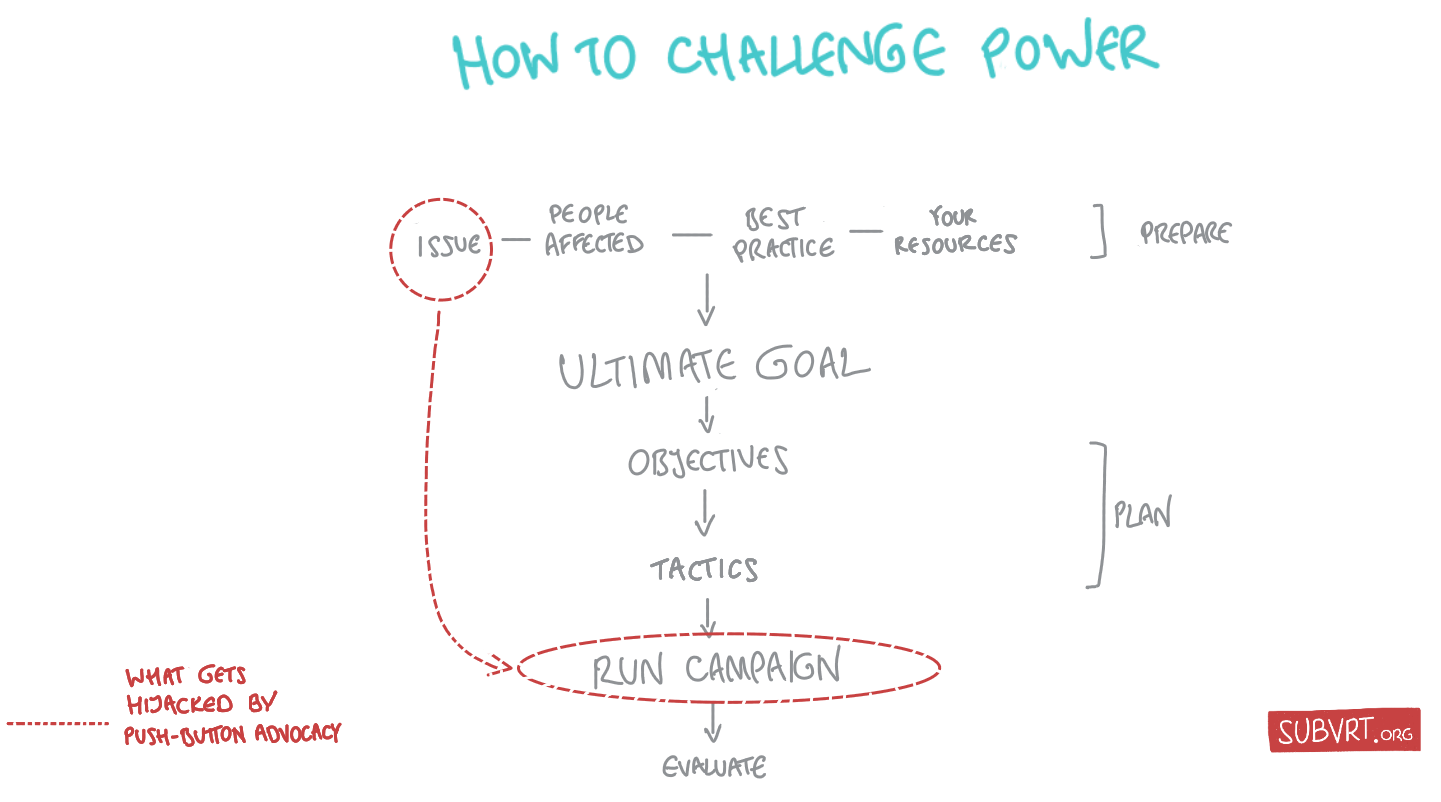
Last summer, during a 5am chat at the foot of a mountain in the Peloponnese, I told a friend I’d started this newsletter.
Who’s it for? he asked. Activists, I replied. Him:
That’s very limiting. I’d never consider myself an activist.
Fair enough. My friend was a poker expert. He’d never get involved in the sort of things that appear when you do a Google image search for ‘activist’. Things like this:

But today I looked at his Twitter feed. The second post in his timeline is him sharing a tweet from a journalist denouncing the US, in a case against the oil giant Chevron:
The US is an authoritarian capitalist regime, in which corporations can buy off the “justice” system and lock up people who challenge their crimes.
My friend is just retweeting someone else’s post. But isn't that still a form of activism, however trivial?
Let’s unpack it.
Advocating between the lines
Here’s what I think my friend is really saying — intentionally or not — by sharing this tweet:
Look at this. I have this view. And so should you.
- “Look at this” is curation. Twitter is like a peer-to-peer newspaper, where we’re all its editors (and readers). He’s assuming that editorial role towards his followers.
- “I have this view” is a statement. Retweeting someone, without context or comment, is a way of showing you agree with what they're saying. Thus, retweeting this view a short way of stating it himself.
- It’s also signalling. There’s a bit of “People like me believe things like this”. Showing that he's politically aware, and that he holds a dissenting opinion that challenges power.
- “And so should you” is advocacy. This is the important one. Today, sharing a tweet to your followers means you’d like them to agree with it, too.1
I don’t want to pick on my friend here. He’s only doing what 4.5 billion other social media users, including me, are doing for two-and-a-half hours a day.
And what I'm describing isn't unique to Twitter. I'm using it here to represent social media in general.
But let's be clear: what we're talking about is push-button advocacy.
Where with a click, you can take a stand and champion a point of view. Simply by sharing someone else's tweet.2
Push-button advocacy allows anyone, potentially, to be an activist. And it's popularity shows that everyone has an activist urge to satisfy.
It's revolutionary. But it's also disempowering.
Activist junk food

I've argued that the Establishment strives to keep you trained on the outrage of the moment. It feeds you a constant stream of information, mostly about fringe, cultural issues, that provokes you to engage. It causes you to rage against what the machine wants.
This splinters your attention, making it less likely that you'll mount a successful challenge to power. And almost impossible that you'll direct your activist energy towards the centres where power really lies.
Push-button advocacy, though, is the masterstroke of this system. Because with it, the Establishment gives you a tool to do something about the outrage it has made you feel. The bar could not be lower: hit a button, share this view, advocate for it. And the rewards are there, an endorphin fix of likes, replies, further engagement.
You feel you've acted on an injustice. When all you've done is feed the system.3 You've raged not only against what the machine wants, but in the way it has permitted you to.
A leap through infinite space

A while ago I interviewed the Serbian political leader Radomir Lazovic, and he told me something that stayed with me.
For an activist, he said, the gap between doing nothing and doing something is “infinite space”. Meaning that it's hard to get off the couch and act.
This is what’s so dangerous and disempowering about push-button advocacy. It allows us, on any issue, to traverse that infinite space with a click. It absorbs activist energy. It sates our hunger to correct injustice by giving us junk food. It changes nothing.
This isn’t by design. It’s just a byproduct of how social media works. Twitter cares about its investors and engagement. It wants to keep people on its site, watching ads, revealing themselves so they can watch better ads.
But doing so places us exactly where the Establishment want us to be – chasing our impulses instead of impact.
Repurposing their tools
I can imagine a platform that isn’t like this. One explicitly designed to keep power in check. That maps power centres, reports injustices and matches people with the right expertise to work on them.
But in the absence of that, even now there's plenty we can do. Because as always, we can use the tools of the enemy against them.
The impact method is a simple framework for empowering Davids to beat Goliaths. It's the process I've followed on every activist project I've worked on.
If you're following it, too, all you need to avoid the lure of push-button advocacy and activism junk food is to use Twitter consciously. Exploit it to help you move through the steps of the impact method. Instead of allowing it hijack your method entirely.

This means structuring how you use Twitter so you're always aware of which part of the method you're using it for. To research your issue. To build your team, and reach out to people affected. Or to gather best practice.
Or if you've decided that doing so helps you achieve your objectives, use Twitter to support your campaign. To pitch media, raise awareness, or run an online action.
But don't let Twitter choose your issue for you. And never let it become your way of addressing it.
Save your rage for the machine.
Notes
1: Twitter wasn't always this way. In a future piece, I'll chart how we got here. (Update: here it is.) But for now I'll take it as a given.
2: This applies whether that tweet contains an opinion, or a fact that supports an argument. Because Twitter turns us all into journalists. And all journalism — whether news or opinion — is advocacy.
3: Even if sharing on Twitter could have an impact, though, the house always wins. As my friend above knows better than me. Because today, Twitter's algorithms decide who sees what you share. And if you're sharing a view that they think shouldn't get play, you're out of luck. As they have shown time and time again, Twitter has no problem burying, scuttling or even outright censoring information. Even when that information later proves to be true.
